Guide
WHITEPAPER
The Buy Then Build Framework
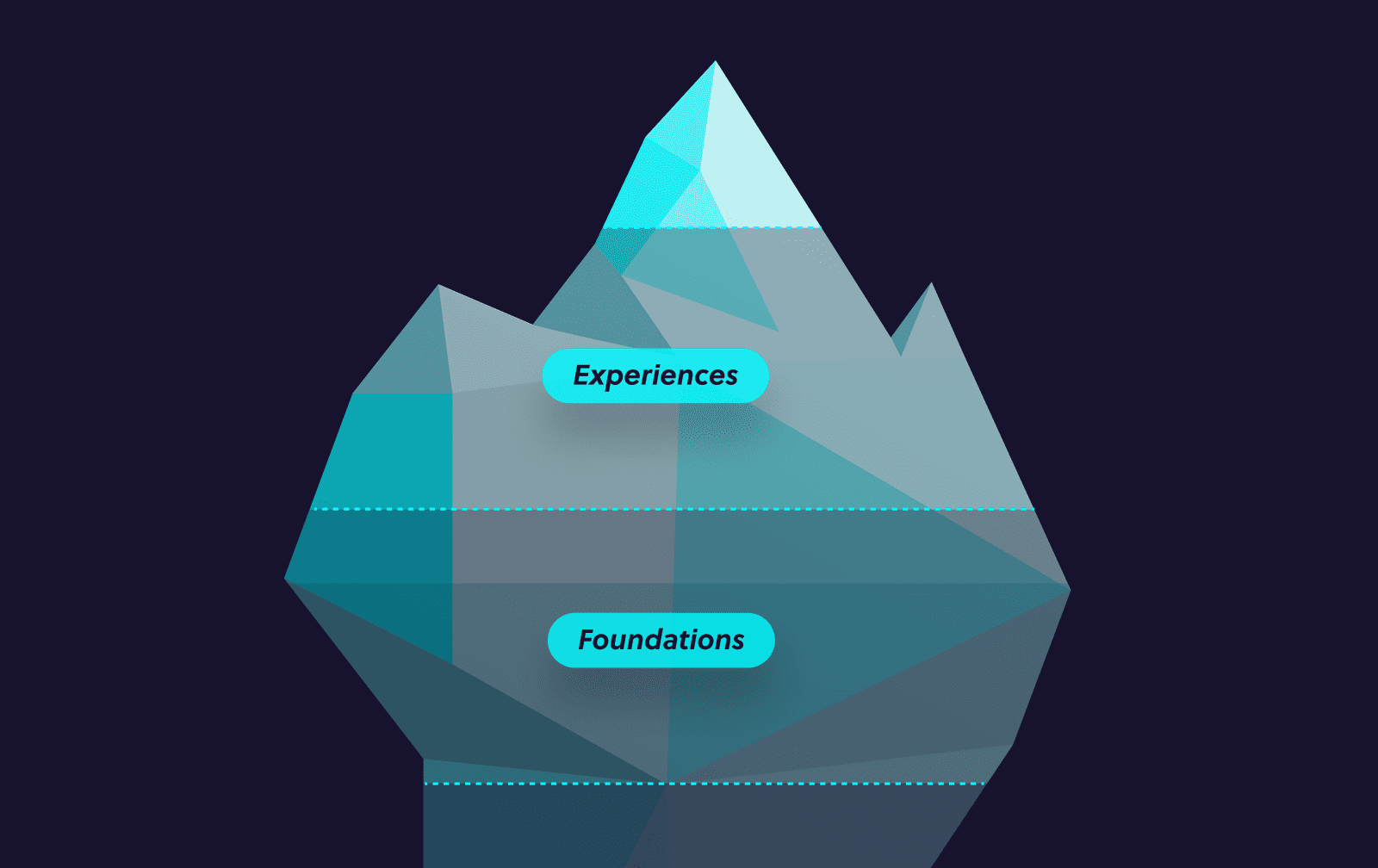
Executive Summary
There are two now-classic questions for eCommerce (and all) technology leaders:
One, can you build your company’s software or should you buy it? Two, even when you can build it, should you and your engineering team be burdened, particularly when buying can free up resources for higher-value endeavors?
It comes down to growth — by minimizing opportunity cost.
Building a high-growth, profitable commerce brand is an ongoing process of optimizing contribution margins. Doing so is about generating operating leverage on scalable systems and teams. And ultimately, it’s about pulling new levers to maximize growth. Among the most powerful levers for all the above is architecting a scalable and efficient tech stack that can keep up with your business and growth demands.
As we’ll discuss below, a subscription platform consists of two dimensions: The Foundations layer and the Experience layer. The former, made up of data models, services, APIs, webhooks, integrations, and other infrastructure is essential of course. But it is only incremental to growth objectives. The Experience layer—what the customer engages with—is the differentiator, the delivery vehicle for exceptional customer experiences, and the true engine of growth.
While Buying or Building both have merit, the right choice depends on your team’s resources, growth ambitions, and need for flexibility. Growth held prey to misallocated resources too often comes when high-growth merchants commit to building the entire subscription platform—from infrastructure to differentiated growth features. The culprit is the fallacy of the binary decision. It’s not. There is a third way. To maximize profitable growth over time, it’s crucial for merchants to unbundle the Foundation and Experience layers.
Buying a platform that you can build, and then differentiate on top of, enables you to maintain total control and flexibility while channeling your engineering resources into what matters most: growth.
The largest loss in building Foundations is the opportunity cost suffered by focusing these resources on infrastructure over growth. It’s a set of costs that can drastically change your growth trajectory, endanger team members’ long-term job security, and impair organizational flexibility. In this white paper, we calculate that merchants building their own Foundations will forgo an estimated 10% of gross revenue growth in the first year alone. Over five years, an incremental 10% annual growth results in a 61% larger business.
A quick back-of-the-napkin formula for maximum growth
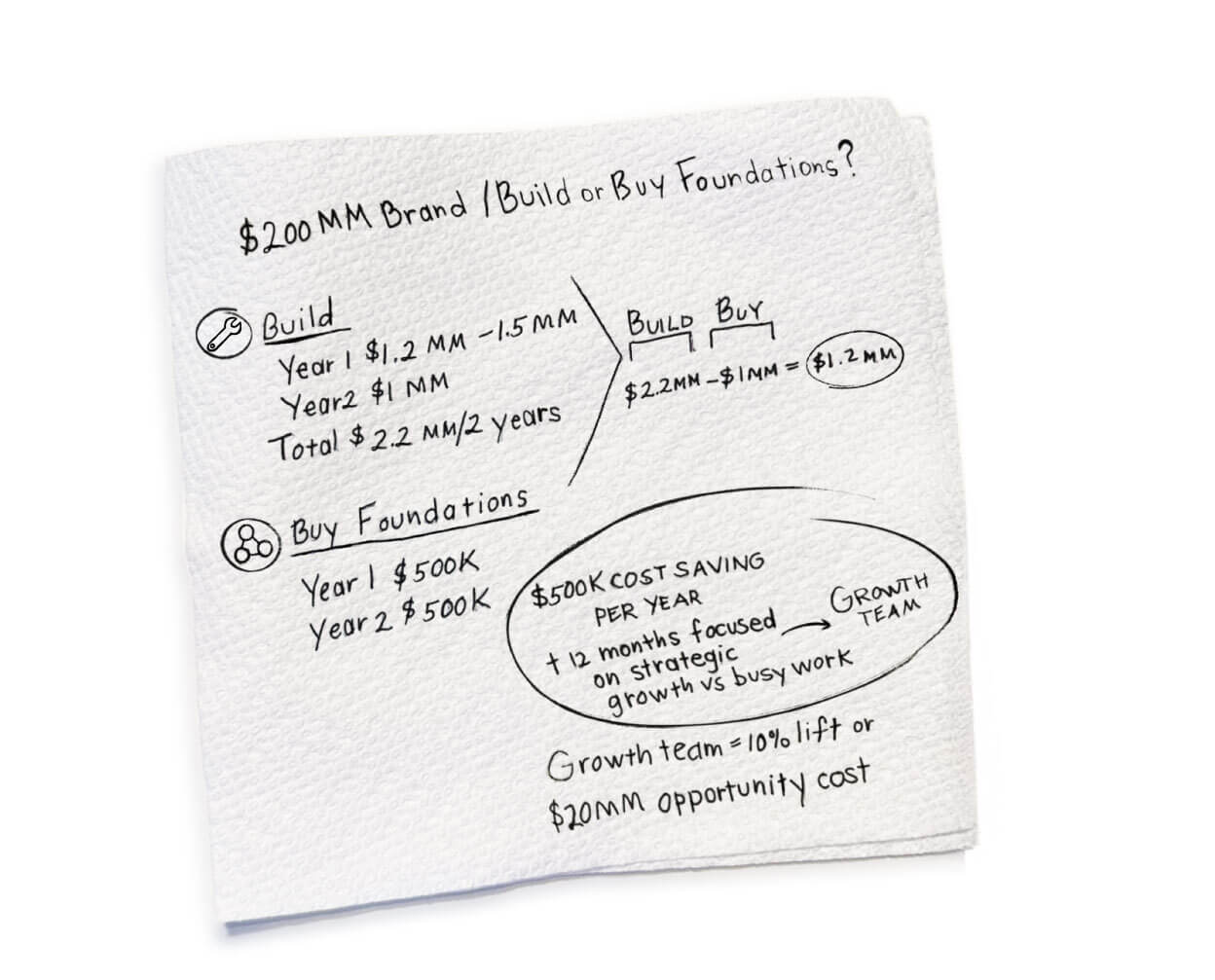
For a $200MM subscription brand, the costs to build the foundational infrastructure of subscriptions integrated into an ecommerce platform and APIs, not including growth features, average $1.2MM to $1.5MM and an entire year or more lost to prerequisite building. On top of that, ongoing maintenance costs are $1MM per year, bringing the total allocation of resources away from growth to something north of $2.2MM. Even if those costs are off-shored, the minimum figure will hover around $1MM.
This is a formula for unnecessary costs. Assuming a newly deployed growth team, the minimalist, off-shored delta is still $500K and likely much more. These are resources that can be redeployed to at least one growth team immediately in year one.
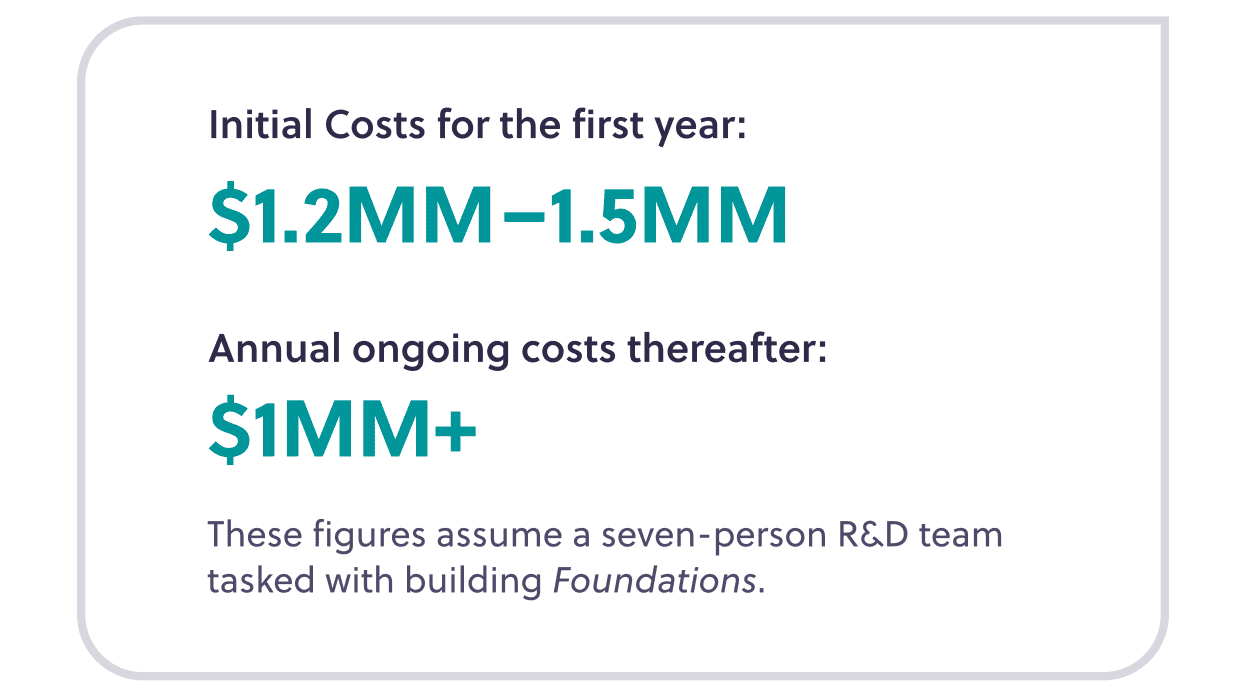
So taking the numbers on our “napkin”
Let’s assume our newly deployed growth team can find one large experiment per year that translates to 5% topline growth, and five small ones that each (5% additional). This total 10% upside now represents a $20MM opportunity cost embedded in building custom subscriptions for a $200MM subscription brand.
For 25+ years, a $600B+ software industry has proven this approach. Subscriptions are not unique nor is eCommerce software. The overriding lesson of this past quarter century in the software industry is two-fold: First, the Buy then Build framework helps you maximize profitable growth. Second, it future-proofs your business for the inevitable twists and turns, even the Black Swans.
Foundations vs Experiences
Subscription-first merchants often want to maintain complete control over their Experience layer for good reason: to iteratively experiment and test differentiated experiences that drive growth. This makes sense as the secret sauce of subscription-first businesses’ success is the subscription experience (and their products). Oftentimes merchants will conflate both the Foundations layer and the Experience layer, assuming they have to build and maintain both.
This is the opportunity cost trap discussed above. The most effective way to maximize subscription growth is to decouple the two layers and buy Foundations and build Experiences on top.
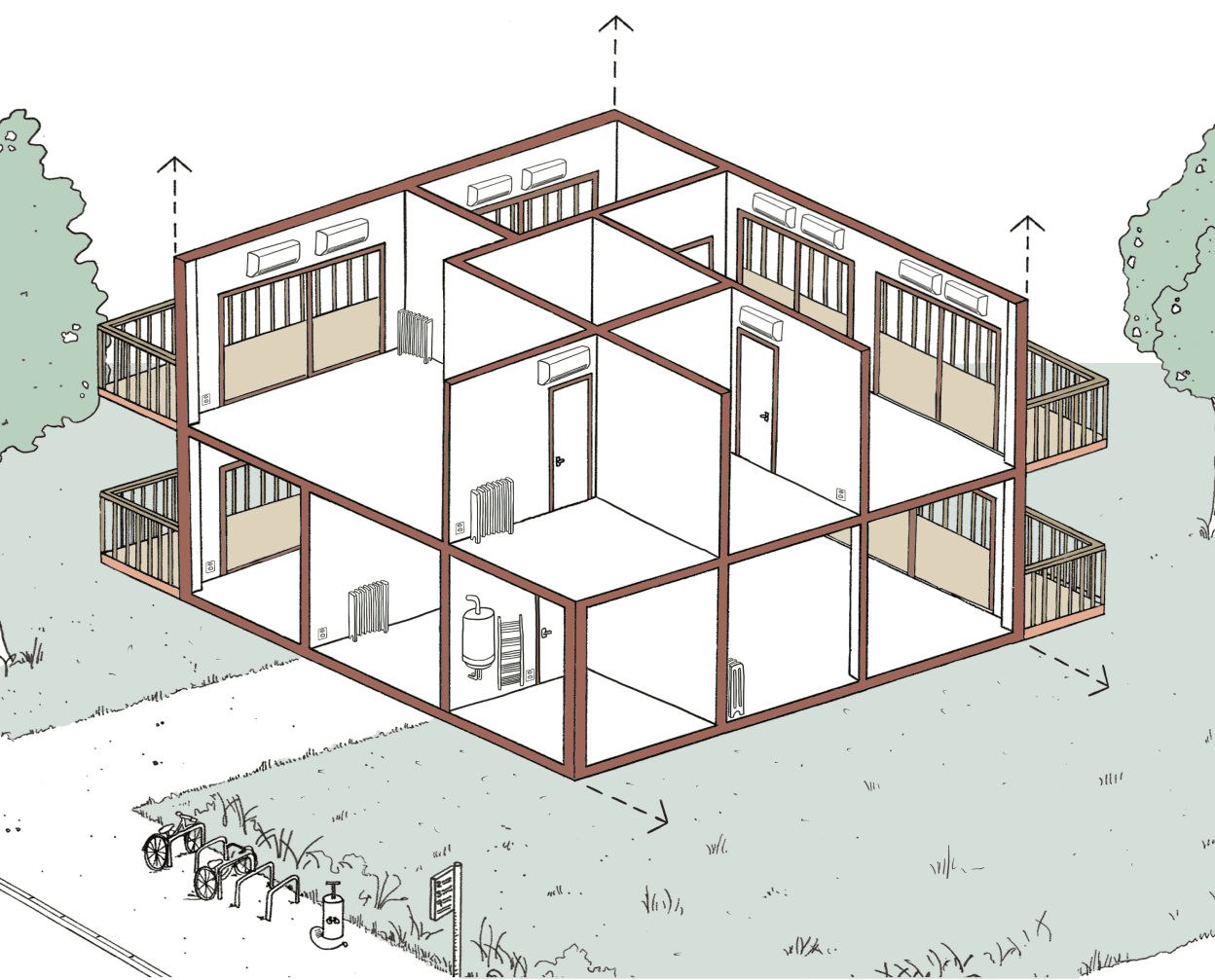
Foundations: The component worth buying
Think about an unfurnished house. The basic and essential building blocks include the plumbing, heating, cooling, electricity, and slab foundation. In the case of homes, specialist-built foundations—made by teams with expertise in soil analysis, waterproofing, and structural integrity—ultimately yield savings of up to 50% on the overall cost of the complete home construction. The same logic applies to the Foundations layer of subscription software.
However essential these Foundation components clearly are, they don’t differentiate a business. They keep the lights on, the clean water flowing in, and the wastewater flowing out. But they don’t add value. It’s the growing value of place and neighborhood (the product ecosystem), the aesthetics of garden and landscaping (the user experience), and the pool or tennis court (the product innovation) that translate to value growth.
The analogous components in the Foundation of subscription infrastructure are core data models, order placement processing, involuntary churn mitigation, and third-party integrations.
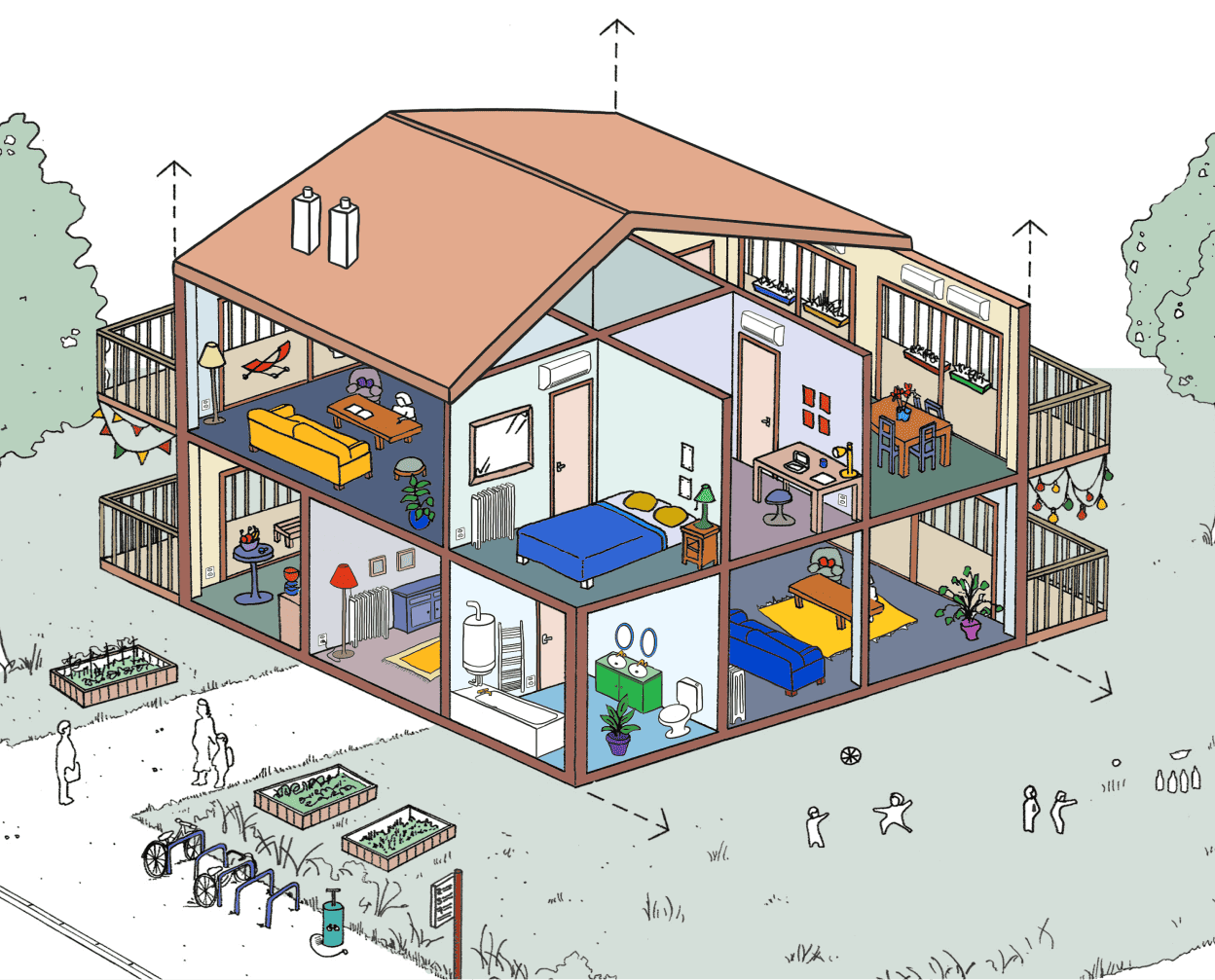
Experiences: The component worth building
Many homebuyers are happy to purchase a finished home down to the wallpaper for convenience. However, just as some homeowners use their creativity to paint their homes and decorate with unique aesthetics, fast-growing subscription brands often benefit from building their own Experiences.
One example would Bonafide’s build-your-own bundle experience that gives merchants ultimate control in personalizing their subscriptions.
Built on a headless-like model, this approach allows brands to go the extra mile with their subscriptions. This ensures total control, flexibility, and the ability to innovate, creating a differentiated subscription offering. If an organization has the vision and engineering resources, buying Foundations and building Experiences is the optimal path to maximize control and growth in subscriptions.
Getting Foundations wrong in either homes or subscription infrastructures is hardly trivial. Bad design can cause the whole house to collapse. Bad design can also cause your subscription engine to seize under high volumes, require complex SKU hierarchies, or even misdirect orders—much like a home built on a flawed foundation.
Is “Buy Then Build” Right for Your Business?
The “Buy Then Build” framework is not a one-size-fits-all solution. Instead, it’s an approach best suited for businesses that value flexibility, speed to market, and the ability to leverage their internal resources for maximum innovation. While both “Buy Then Build” and Buying SaaS have merit, this framework allows you to strike a balance, combining the strengths of both to fit your unique needs.
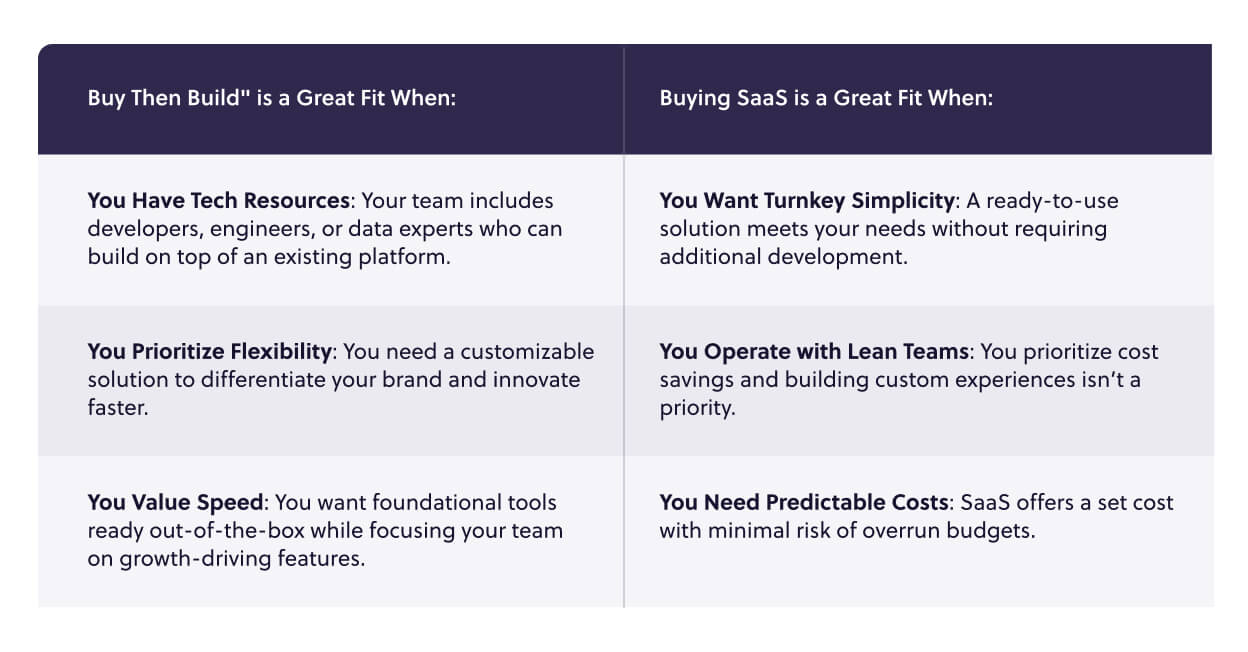
Both approaches can drive profitable growth; the right choice depends on your team’s resources, growth ambitions, and need for flexibility.
Accurately quantifying the cost of building subscription Foundations
Maintaining ecommerce integrations at Ordergroove over the last five years across four engineering teams repeatedly demonstrated that the cost and time to build Foundations is often underestimated by business leaders. They often assume building and integrating Foundations will cost as little as $500K. Just a few of the essential components that lie below the surface of the Foundational layer are the building of order processing throughput that can auto-scale on peak traffic days, maintaining must-have integrations, or developing data models for new sales strategies.
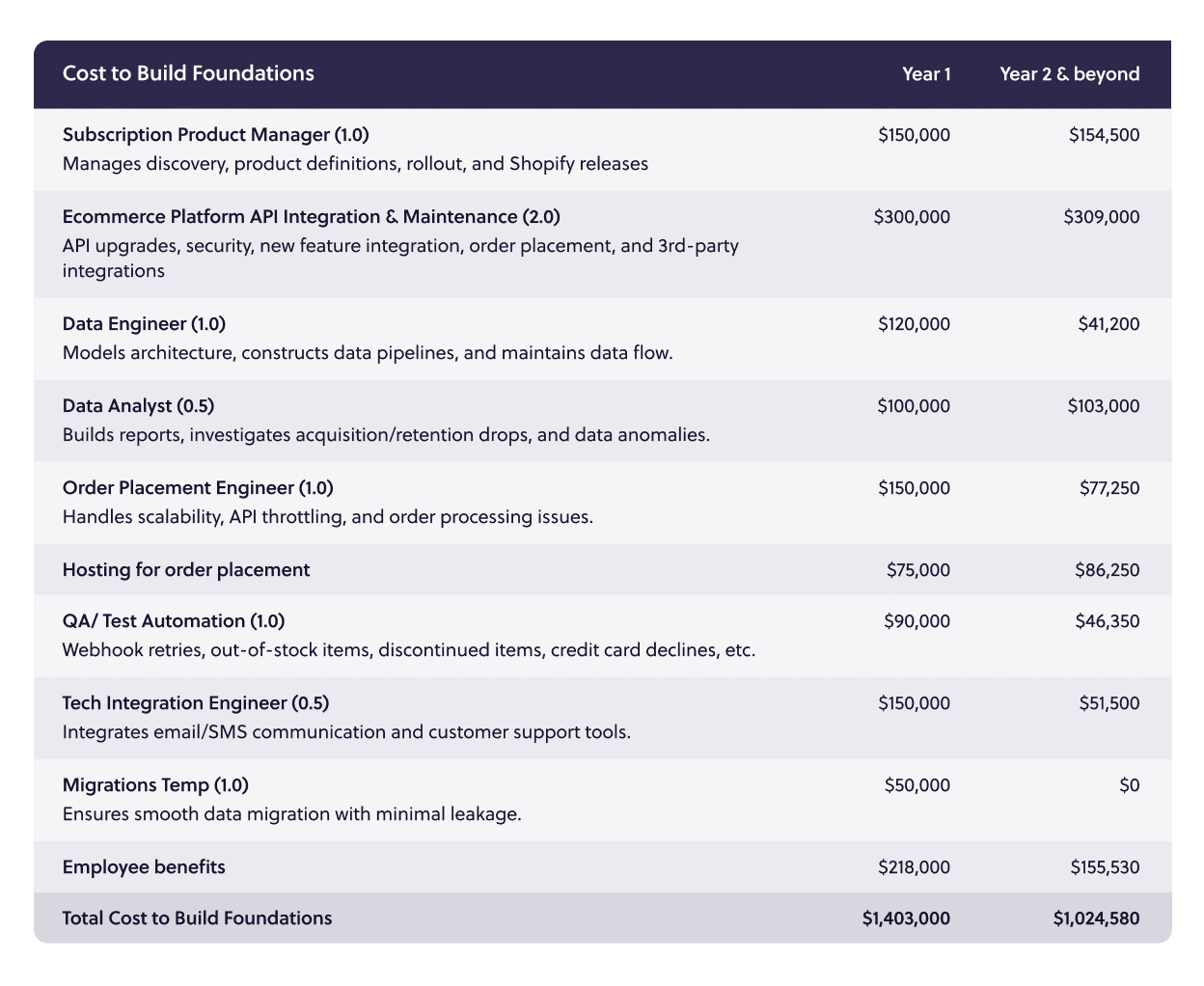
Building Foundations is always more than meets the eye
Foundations will amount to millions in development and maintenance costs. While in-sourcing development may be enticing, from 50% to as many as 90% of software projects go beyond time and cost and further compound the opportunity cost of creative teams and skilled resources being directed away from overall innovation and growth.
Just a few of the essential components that lie below the surface of the Foundational layer are the building of order processing throughput that can auto-scale on peak traffic days, maintaining must-have integrations, or developing data models for new sales strategies.
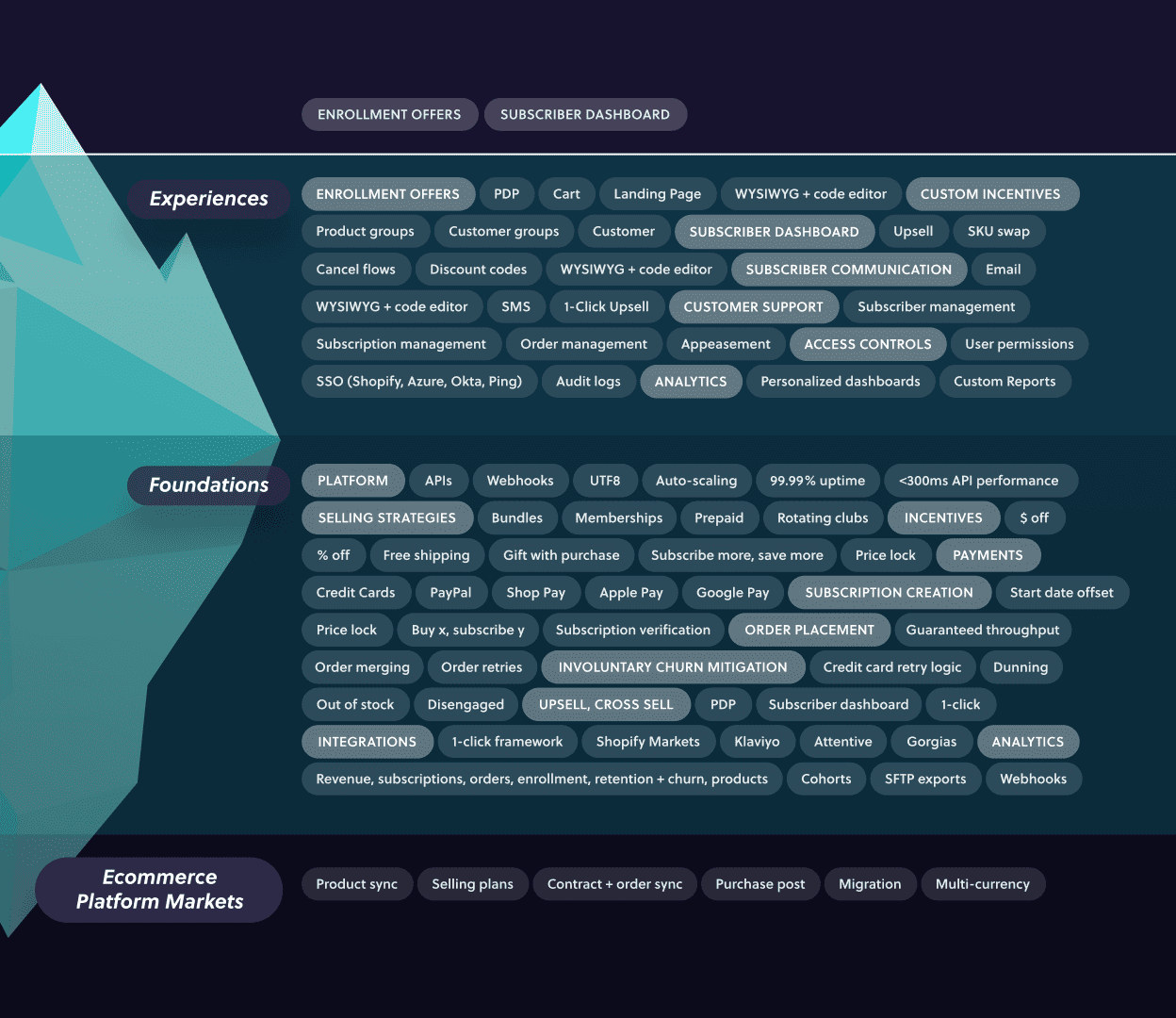
Despite the needless expense of a team building Foundations, it is the mere tip of the opportunity cost iceberg. As we’ve presented throughout this whitepaper, the largest hidden loss is the opportunity cost suffered when these resources are focused on infrastructure over growth.
A tale of two DTC brand scenarios
Scenario One: High Opportunity Cost
An investment of an estimated $1MM annually in Foundations rather than Experiences long-term limits resources allocated to growth and drastically changes business trajectory on longer time horizons.
Scenario Two: Maximum Growth
A $200MM brand that invests in buying Foundations and building Experiences, eliminates the need for a seven-person team exclusively building and maintaining subscription infrastructure.
Reassigning four of those seven team members results in a dedicated Experiences Growth team. Scenario 2 and a newly redeployed growth team can conservatively produce the following:
- The execution of one high-impact project per year driving 5% top-line growth.
- Five smaller improvements each driving 1% growth.
This results in 10% additional top-line growth. For a $200MM business, that’s an extra $20MM in revenue in just one year.
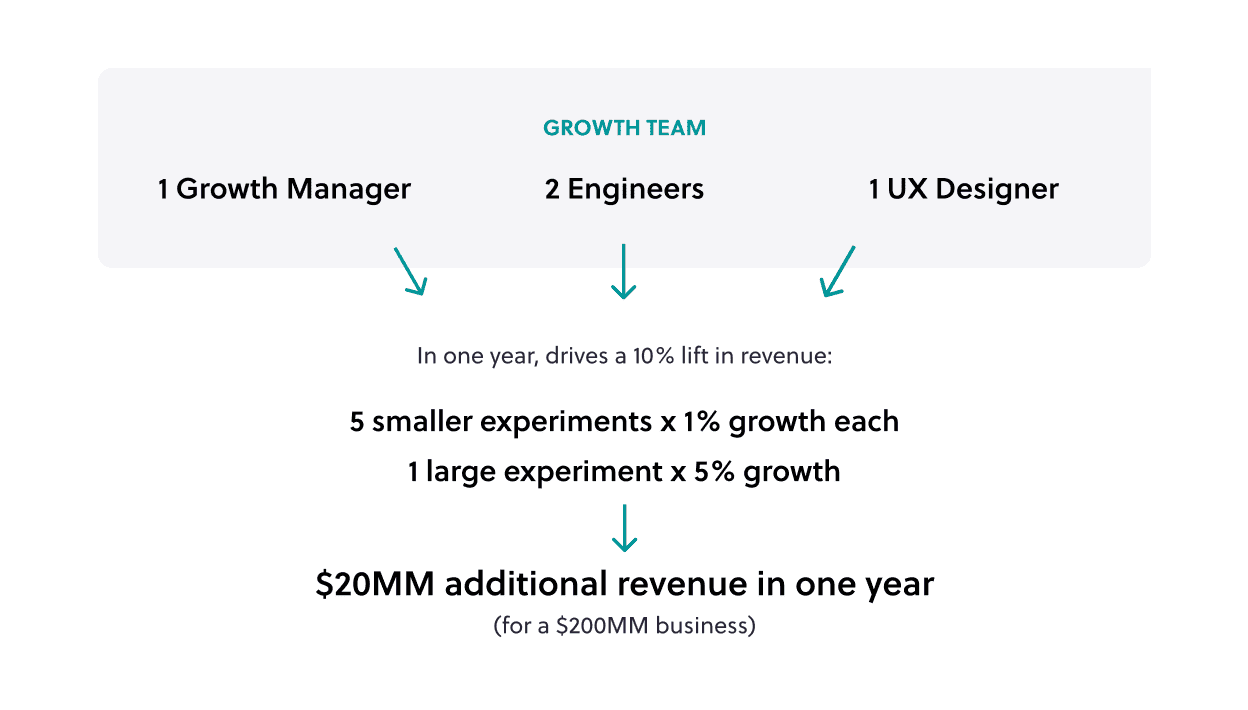
The third way: Buy or Then Build is NOT a binary decision
While Buying or Building both have merit, the right choice depends on your team’s resources, growth ambitions, and need for flexibility. Growth held prey to misallocated resources too often comes when high-growth merchants commit to building the entire subscription platform—from infrastructure to differentiated growth features. The culprit is the fallacy of the binary decision. It’s not.
There is a third way. To maximize profitable growth over time, it’s crucial for merchants to unbundle the Foundation and Experience layers. That’s why the fastest-growing subscription-first brands in the world, like Oddity, are adopting the “Buy or Then Build” framework to reallocate resources for a competitive advantage and explosive growth:
With your team and resources focused on the customer Experience, you can control what counts. When it comes to the imperative of innovation, move faster. Scale with the confidence of a battle-tested, globally engaged, and pioneering partner that is serving the most iconic brands in commerce. Join the subscription-first brands deploying resources towards growth, and leave the Foundations to Ordergroove—all at less than 50% of the cost to build.